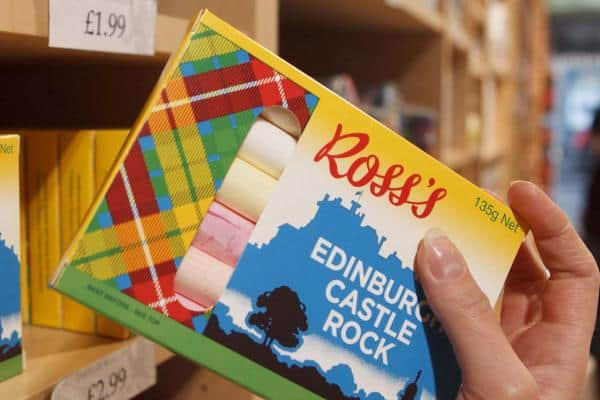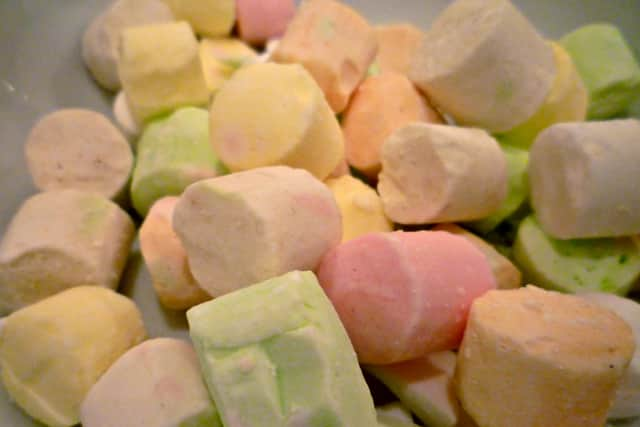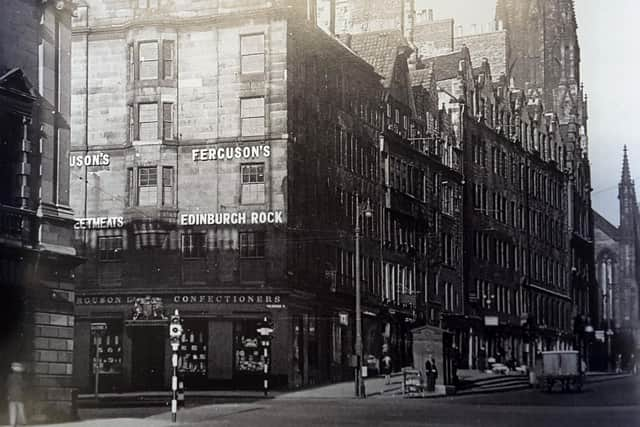The story of Edinburgh Rock - the Capital's most celebrated confection
and live on Freeview channel 276
A favourite among locals and a natural enemy of dentists for generations, it’s pleasing to know that the Capital’s most celebrated addition to the world of confectionery can still be enjoyed today – for its future has been under threat in recent years.
Edinburgh Rock was almost declared extinct five years ago, when longtime manufacturer Ross’s, which had producing the sweets for decades, experienced financial difficulties.
Advertisement
Hide AdAdvertisement
Hide AdFormer chairman of the family firm Graham Ross – great grandson of founder James Ross – announced in February 2015 that the company would be closing its doors after he failed to convince any of his descendants to take over its running after he retired.
Thankfully Ross’s was handed an eleventh-hour reprieve after a local entrepreneur stepped in to save its factory from closure.
Unlike its more famous seaside cousins, Edinburgh Rock typically comes in segments rather than sticks and was originally made by Ferguson’s of Edinburgh.
Founder Alexander Ferguson – not to be confused with a certain former Manchester United and Aberdeen football manager – was born in 1798 in Doune, Perthshire, and came to be popularly known as “Sweetie Sandy”.


Advertisement
Hide AdAdvertisement
Hide AdIt’s said that Sandy developed a love of making sweets at a tender age, much to the annoyance of his father who had wanted his son to pursue a more traditional trade such as joinery.
Undeterred, Sandy left home and sought out employment at a confectioner’s in Glasgow and later moved to the Capital, where he established his very own business in 1837.
One of myriad Edinburgh confectioners in Edinburgh in the 19th century, Ferguson’s firm was based at Melbourne Place, part of George IV Bridge, in the Old Town and specialised in wholesale confectionery, including the manufacture of boiled sugar sweets and Edinburgh Rock, and lozenge production.
Differing from the lettered sticks that are synonymous with the likes of Blackpool, Edinburgh Rock was packaged in distinctive tartan boxes, had a crumbly texture and came in a variety of pastel colours.


Accidental genesis?
Advertisement
Hide AdAdvertisement
Hide AdIt is said that Ferguson’s recipe for Edinburgh Rock came about by complete accident.
The story goes that the budding confectioner had left a batch of newly-completed sweets in an open box and forgotten about them. Several months later, when he happened upon the desiccated results, Ferguson is said to have loved the taste so much that he decided to make more using similar techniques.
Unsurprisingly, the production of Edinburgh Rock made Ferguson a very wealthy man. In later years, he returned home to Doune to retire where he was remembered with great fondness for his generosity in supplying local kids with all the sweets they desired from his own pockets.


In the early 20th century, Edinburgh poet John Walter Oliver wrote this piece in homage to the unique confection:
Quelle est cette odeur agréable
That’s wafted on the air?
The perfume of Arabia
Cannot with it compare.
What makes the crowds to Melbourne Place
With wide-stretched nostrils flock?
It’s Ferguson who’s boiling up
His Edinburgh rock!
Melbourne Place remained the home for Ferguson’s factory in Edinburgh up until 1959, when the firm relocated and merged with biscuit makers McVitie’s.
The building which once housed Ferguson’s was demolished in 1967 to make way for new council offices. The site was redeveloped again in 2007 to incorporate what is now the boutique G&V Hotel.
Advertisement
Hide AdAdvertisement
Hide AdEdinburgh Rock continues to be produced today by Ross’s and a handful of other local confectioners – long may it be enjoyed yet.
A message from the Editor:
Thank you for reading this article. We're more reliant on your support than ever as the shift in consumer habits brought about by coronavirus impacts our advertisers.
If you haven't already, please consider supporting our trusted, fact-checked journalism by taking out a digital subscription at https://www.edinburghnews.scotsman.com/subscriptions.
Comment Guidelines
National World encourages reader discussion on our stories. User feedback, insights and back-and-forth exchanges add a rich layer of context to reporting. Please review our Community Guidelines before commenting.